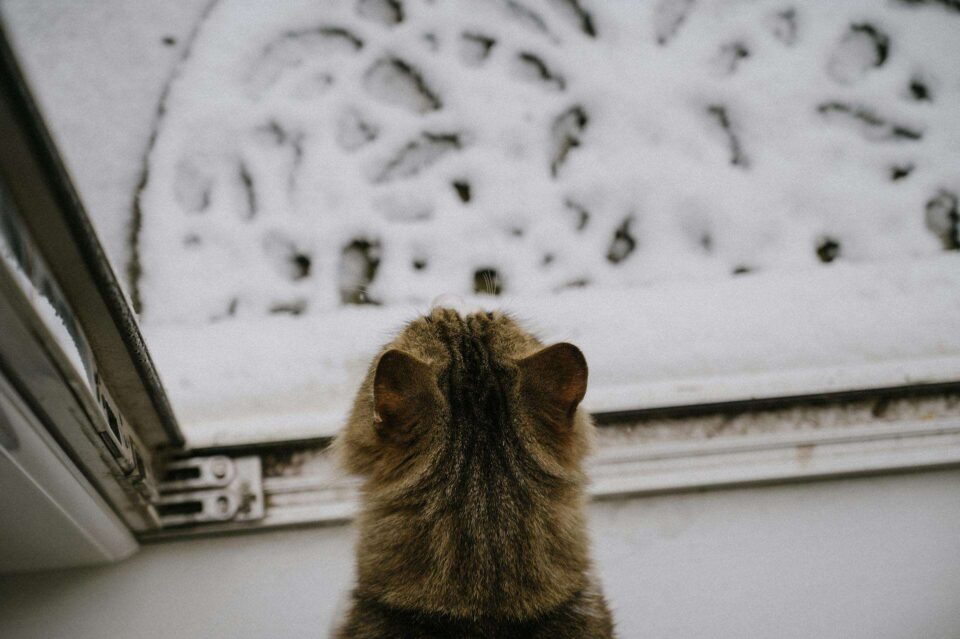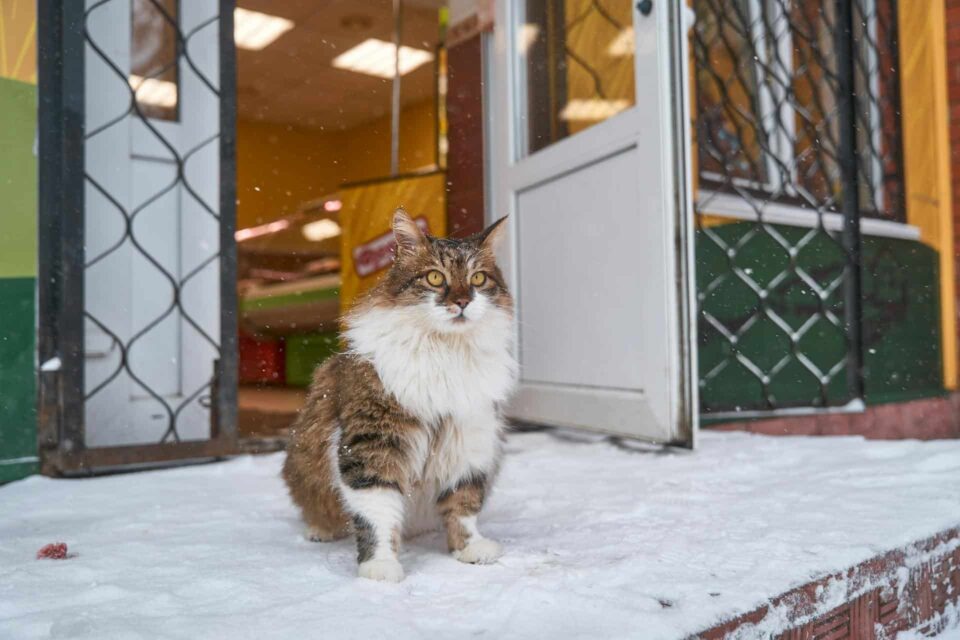Do Cats Get Cold Injuries?
Cats may seem tough and adaptable, but cold weather can still take a toll on their health. Prolonged exposure to low temperatures can lead to cold-related injuries like frostbite or hypothermia. Understanding the risks and how to protect your cat during chilly weather is essential for keeping them safe.
Key Takeaways
- Cats are at risk of frostbite and hypothermia in freezing conditions.
- Frostbite commonly affects ears, tails, and paws.
- Symptoms of cold injuries include lethargy, shivering, and discolored skin.
- Keeping your cat indoors during extreme cold is the best protection.
- Monitoring your cat’s hydration and warmth can help avoid winter health issues.
How Cold Is Too Cold for Cats?
Cats can tolerate cooler temperatures but are not immune to the effects of extreme cold. Prolonged exposure to freezing weather, especially for outdoor or stray cats, can lead to dangerous conditions.
Wondering how cold is too cold for cats? Temperatures below 45°F can start to impact your cat, and anything below 32°F poses a serious risk.
Even short trips outside during freezing weather can result in frostbite on exposed areas like the ears, nose, and paws. Keeping your cat indoors during extreme cold is the safest option.
Common Cold-Related Injuries in Cats
1. Frostbite
Frostbite happens when tissue freezes due to prolonged exposure to cold. It typically affects areas with less fur, like the ears, paws, and tail. Symptoms include pale or discolored skin that may feel cold or brittle to the touch.
2. Hypothermia
Hypothermia occurs when a cat’s body temperature drops below normal due to extreme cold. Symptoms include shivering, lethargy, and shallow breathing. Severe cases can be life-threatening and require immediate vet care.
3. Dry or Cracked Paws
Cold weather and walking on icy surfaces can cause your cat’s paws to crack or become irritated. Checking and cleaning their paws after outdoor trips can help.
Related: Keeping Your Cat Calm: What to Do
Recognizing the Signs of Cold Injuries
When your cat is dealing with cold-related health issues, the signs aren’t always easy to spot. Recognizing the symptoms early is key to taking quick action and preventing further complications.
Some common signs of cold-related injuries include:
- Lethargy or unusual tiredness: If your cat seems more sluggish than usual, it could be a response to cold exposure.
- Shivering or trembling: These are clear indicators that your cat is struggling to stay warm.
- Pale, blue, or gray skin: Discolored skin, especially on exposed areas like ears and paws, may indicate frostbite or poor circulation.
- Avoiding movement or showing stiffness: Cats may limit their movement to conserve heat or due to cold-induced stiffness in their joints.
- Visible irritation or damage to paws or ears: Cracks, redness, or other visible injuries on extremities are signs that your cat is struggling with the cold.
If you notice any of these symptoms, it’s important to act quickly. Move your cat to a warm, dry place immediately. Gently warm affected areas, but avoid using direct heat. Contact your vet if symptoms persist or worsen, as some conditions, like frostbite, may require medical intervention. Early care is crucial to ensure your cat’s recovery and comfort.
How to Protect Your Cat From Cold Injuries
1. Keep Them Indoors
The easiest and most effective way to protect your cat from cold-related injuries is to keep them indoors during freezing weather.
Temperatures below 45°F can start to impact your cat’s health, especially if they are exposed for long periods. Cats that usually enjoy outdoor time should be encouraged to stay inside when it’s cold.
If your cat insists on going out, supervise their time and limit it to short trips. Providing them with an indoor scratching post or stimulating toys can help satisfy their need for activity without exposing them to the cold.
2. Create a Warm Environment
Cats love cozy spots, and creating a warm environment for them inside your home can make a big difference. Set up heated mats, soft blankets, or a bed in a draft-free area where they can rest comfortably.
Avoid placing their bedding near windows or doors, as these areas can be colder due to drafts. Providing multiple cozy spots around your home ensures your cat has options to retreat to when the temperature drops.
3. Watch Their Hydration
Winter air tends to be dry, which can affect your cat’s hydration. Make sure fresh water is always available and check their bowl frequently to ensure it hasn’t frozen if left near a window or cooler area.
Dehydration can lead to other health issues, so it’s important to encourage your cat to drink water regularly. Learn more about cat hydration to keep your pet healthy and hydrated throughout the colder months. Adding wet food to their diet can also help increase water intake.
Related: Anxiety in Cats: Identifying, Managing, and Soothing Feline Stress
Winter Grooming and Health Tips
Regular grooming and skin care can help your cat stay healthy during colder months. Cats may be prone to skin issues like dryness or irritation in winter.
- Check for Dry Skin: Winter air can make your cat’s skin flaky or irritated. Look for signs of discomfort, like scratching or licking.
- Monitor Watery Eyes: If your cat shows watery eyes, it could be due to dryness or exposure to cold winds.
- Inspect for Frostbite: Keep an eye on exposed areas, especially the ears and paws, for signs of discoloration or damage.

Are Indoor Cats at Risk?
Even indoor cats can be affected by cold weather if their environment isn’t warm enough. Drafty areas or cold tiles can make it hard for your cat to stay comfortable. Provide them with plenty of warm bedding and avoid placing their beds near windows or doors where drafts are common.
Cats can also experience sneezing or mild respiratory issues when exposed to colder air indoors. For more insight, explore why cats sneeze and what it could mean during winter.
Products That Can Help
Holistic care can make a big difference in keeping your cat safe and comfortable during winter. Gou Gou Pets offers the Joint Comforting Shampoo for Cats, which is specially designed to support skin and coat health during seasonal changes. Using products that promote overall wellness can enhance your cat’s comfort during colder months.
Keep your cat healthy this winter with Gou Gou Pets’ Joint Comforting Shampoo for Cats. Support their skin and coat while ensuring they stay comfortable in colder weather.
Conclusion
Cats can suffer from cold injuries, especially when exposed to freezing temperatures for too long. By keeping them indoors, providing a warm environment, and monitoring their health, you can help protect them from common winter issues like frostbite or hypothermia. With a little extra care and attention, your cat can stay safe and comfortable throughout the colder months.
~Veterinarian Recommended